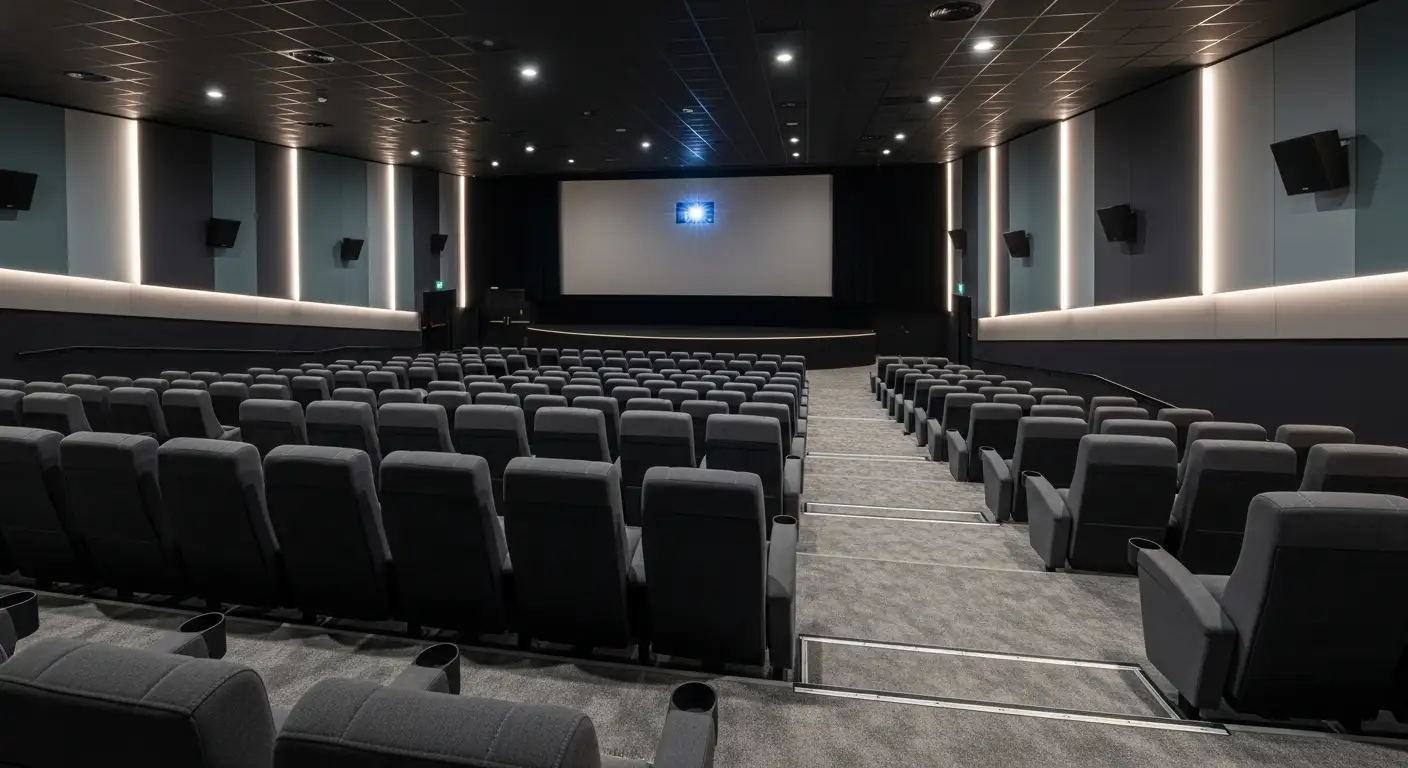Sensory Seeking vs. Sensory Avoiding in Children
A Deep Dive into Sensory Processing Behaviors
Children exhibit a wide range of sensory behaviors that reflect how their brains process sensory information. Differentiating between sensory seeking and sensory avoiding behaviors is essential for supporting children with sensory processing challenges, including those with autism spectrum disorder (ASD) or other developmental differences. This article explores these behaviors in detail, helping parents, educators, and caregivers foster environments that promote regulation and well-being.
Recognizing Signs and Symptoms of Sensory Processing Issues

What are common signs and symptoms of sensory processing issues in children?
Children with sensory processing challenges often exhibit a variety of behaviors that highlight their sensitivities or insensitivities to sensory stimuli. These signs can vary widely, as each child’s sensory profile is unique.
A typical indicator is avoiding certain textures, such as rough fabrics, or being hypersensitive to lights and sounds, which may cause them to cover their ears or squint away from bright environments. Conversely, some children may seem under-responsive, seeking out intense sensory input by crashing into objects or engaging in repetitive movements.
Children may also seek excessive movement or tactile engagement—such as touching everything around them, bouncing, or jumping—often in search of sensory input they might not naturally receive.
Extreme reactions like tantrums, irritability, or mood swings are common, especially when overwhelmed or unable to cope with sensory overload. These children might also become easily upset during transitions or in noisy, crowded settings, finding it difficult to stay calm or focused.
Clumsiness and difficulties with fine motor skills, such as struggles with handwriting or using utensils, can be another sign, often linked to underlying sensory issues affecting their body awareness and coordination.
Identifying these behaviors is crucial, as they significantly impact daily functioning, emotional regulation, and social interactions. Tailored support from occupational therapists can make a profound difference in helping children manage their sensory challenges effectively.
Deciphering Sensory Seeking and Sensory Avoiding Behaviors
What is the difference between sensory seeking and sensory avoiding behaviors?
Children with sensory processing differences often display behaviors that fall into two broad categories: sensory seeking and sensory avoiding. Understanding these behaviors involves recognizing how children react to sensory stimuli, which is influenced by their sensory thresholds.
Sensory seeking behaviors are typical of children with high sensory thresholds. These children actively crave additional sensory input to feel balanced and regulated. They might frequently engage in activities like jumping, crashing into objects, spinning, or touching everything within reach. These actions often look impulsive or hyperactive to observers but serve a purpose for the child—they are trying to meet their sensory needs.
On the other hand, sensory avoiding behaviors are characteristic of children with low sensory thresholds. These children tend to withdraw or avoid certain stimuli that they find overwhelming or uncomfortable. They might cover their ears when loud noises occur, avoid textures that feel unpleasant, or shy away from crowded or brightly lit environments. These behaviors act as their way of managing sensory overload or distress.
Both types of behaviors highlight fundamental differences in how children process sensory information:
- Seeking behaviors indicate under-responsivity or hyposensitivity; these children need more or stronger sensory input.
- Avoiding behaviors suggest hypersensitivity or over-responsivity; these children need less or calmer sensory experiences.
Children can exhibit both seeking and avoiding behaviors depending on the context or their individual sensory thresholds. Recognizing this helps caregivers and professionals tailor strategies that support their sensory regulation, like incorporating heavy work activities for both seeking and avoiding behaviors, ultimately aiding in creating a comfortable and supportive environment.
The Complexity of Dual Sensory Behaviors in Children

Can a child be both sensory seeking and avoiding at the same time?
Yes, children can exhibit both sensory seeking and avoiding behaviors simultaneously, especially if they have mixed sensory thresholds. This means that depending on the sensory input, a child might crave certain sensations while at the same time react negatively to others.
Children with mixed behaviors often seek specific types of sensory input, such as movement or touch, to meet their needs. For example, they might enjoy rough play, swinging, or chewing, which provides proprioceptive or tactile input.
At the same time, they may avoid or overreact to different stimuli, like loud noises, bright lights, or certain textures. For instance, a child might seek tactile input but dislike wearing certain fabrics or being touched unexpectedly.
These behaviors can happen within the same sensory system — for example, a child may seek out messy play to satisfy tactile curiosity but avoid tight clothing that feels uncomfortable.
Environmental factors and the child's neurological processing influence these contrasting behaviors. A noisy classroom could be overwhelming, leading to withdrawal or avoidance, while during quiet, sensory-rich activities, the same child might actively seek additional input.
Understanding this duality is crucial for caregivers and therapists. It highlights the importance of creating adaptable environments and tailored strategies that respect the child's particular sensory needs. Recognizing that a child can both seek and avoid stimuli helps explain why their reactions are complex and why support must be individualized.
In summary, a child's sensory profile can include both seeking and avoiding behaviors, often happening in different contexts or sensory modalities. Proper assessment and intervention can help balance these behaviors, promoting better regulation and social participation.
Support Strategies for Children with Sensory Challenges

How can caregivers support children with sensory processing challenges?
Supporting children with sensory processing difficulties involves understanding their unique sensory needs and creating tailored strategies to help them regulate and thrive. Caregivers can start by establishing predictable routines that reduce unexpected sensory stimuli, helping children feel safe and in control of their environment.
Incorporating sensory diets—personalized activities designed to provide the right amount of sensory input—can be highly effective. These include engaging in movement-based activities such as jumping, swinging, or stomping, which help regulate children with mixed thresholds, whether they seek or avoid sensory input. Tools like weighted blankets, fidget toys, and calming textiles can provide comforting proprioceptive input.
Occupational therapy (OT) with a focus on sensory integration plays a crucial role. Trained therapists use specific techniques to help children process sensory information more effectively. These interventions are often personalized and can include activities like deep pressure or controlled exposure to sensory stimuli to build tolerance and improve self-regulation.
Environmental modifications are also vital. Creating sensory-friendly spaces—quiet corners with soft lighting, minimal noise, and comfortable textures—can provide safe zones for children to retreat when overwhelmed. Reducing environmental triggers such as loud sounds or bright lights helps prevent sensory overload.
Using appropriate tools and supports can make a difference. Heavy work tools, weighted vests, and sensory toys can help children seek or avoid stimuli safely. Consistent use of these supports, along with verbal reinforcement and visual cues, can increase children’s awareness of their sensory needs and teach them strategies for self-calming.
Overall, support from professionals, combined with proactive home strategies, can empower children to manage their sensory sensitivities better. Early intervention, parent education from organizations like the STAR Institute, and ongoing collaboration with occupational therapists are essential to help children navigate their sensory world confidently.
Addressing Sensory Behaviors in Early Childhood

How do sensory seeking behaviors manifest in young children?
Sensory seeking behaviors in young children are characterized by a persistent desire to obtain sensory input from their surroundings. These children often engage in activities like jumping on a trampoline, spinning in circles, crashing into furniture, or repeatedly touching objects and textures.
They tend to be highly active, fidgety, and fascinated by a variety of stimuli such as loud noises, bright lights, or tactile sensations. You might notice they are less aware of personal boundaries, frequently seeking rough or vigorous play to satisfy their sensory needs.
Children who seek sensory input often display behaviors like chewing non-food items, bouncing, rocking, and seeking proximity to tactile objects. Their drive for intense sensory experiences arises partly from decreased sensory awareness, which makes it difficult for them to feel alert and self-regulate.
Supporting these children involves providing structured activities that incorporate sensory-rich experiences, along with occupational therapy. These interventions help them develop better self-regulation skills, enabling more appropriate responses to stimuli, and improve their overall engagement in daily routines.
Empowering Caregivers and Educators
Understanding the nuanced differences between sensory seeking and sensory avoiding behaviors is crucial for creating nurturing environments that support each child's unique sensory profile. Recognizing early signs and implementing tailored strategies—whether through sensory diets, professional therapy, or environmental adjustments—can significantly improve a child's ability to manage their sensory experiences. Educating parents, teachers, and caregivers fosters empathy and collaboration, ensuring that children with sensory processing differences thrive socially, emotionally, and behaviorally. With proper support, children can learn to self-regulate and engage more comfortably with their surroundings, paving the way for healthier development and more positive daily experiences.
References
- When Your Child is Sensory Seeking And Sensory Avoiding -
- Sensory Processing Sensory Seeker, Sensory Avoider or Both?
- Sensory Seeking vs Avoiding - Lighthouse Autism Center
- Four Patterns of Sensory Processing - ConnectABILITY
- What is Sensory Seeking and Sensory Avoiding? - Twinkl Teaching
- How To Support Your Children With Their Sensory Challenges
- Sensory Processing Issues Explained - Child Mind Institute
- Sensory Processing for Parents - Kids Therapy Club
- Recognizing Signs of Sensory Processing Disorder - Thrive Peds
Other articles
Recent articles

Cultural Perspectives On Autism Around The World

Autism And Creative Arts As Emotional Expression Tools

Developing Emotional Regulation Skills In Autistic Teens

Best Sensory-Friendly Lighting Solutions For Autism

Cognitive Behavioral Therapy Adaptations For Autism

Best Practices For Autism-Friendly Movie Screenings

Autism And Eating Challenges Beyond Picky Eating

Best Practices For Autism-Friendly Public Transport Design

Best Ways To Foster Collaboration Between Parents And Schools For Autism Support

Supporting Autistic Children During Transitions Between Activities

The Role Of Teachers In Fostering Autism Peer Acceptance

Using Art Therapy To Support Children With Autism

Autism And Strategies For Addressing Sensory Defensiveness

Autism And The Benefits Of Structured Leisure Activities

How To Support Autistic Students During Exam Season

Autism And Goal Setting For Personal Growth

How To Use Gamification In Autism Learning Programs

How Schools Can Reduce Bullying Of Autistic Students

Early Intervention Strategies For Autism Spectrum Disorder

The Role Of Therapists In Autism Life Skills Coaching

How To Support Autistic Individuals In Crisis Situations

Autism And Self-Care Routines For Stress Management

Understanding Echolalia And Its Role In Autism Communication

Autism And Fine Arts Education Benefits

The Impact Of Multisensory Learning On Autism Education

How Family Counseling Supports Autism Household Dynamics

Best Practices For Inclusive Playgrounds For Autism

Best Practices For Autism-Friendly Shopping Centers

How Autism Affects Fine Motor Skill Development

Best Ways To Introduce Sensory Activities Into Daily Routines

How Sports Teams Can Be Inclusive Of Autistic Players

Autism And Strategies For Building Workplace Resilience

Autism And The Impact Of Hormonal Changes During Puberty

How To Support Autistic Students In Foreign Language Classes

Best Ways To Teach Money Skills To Teens With Autism

Supporting Siblings Of Children With Autism

Autism And Co-Occurring Gastrointestinal Disorders

The Role Of Art Projects In Autism Sensory Integration

How Schools Can Incorporate Sensory Break Spaces

Best Practices For Autism Sensory Regulation At School

Autism And Strategies For Teaching Organizational Skills

Understanding The Relationship Between Autism And Anxiety Disorders

Autism And Life Planning For Long-Term Care

Exploring Visual Supports In Autism Education

Ways To Encourage Social Interaction In Children With Autism

The Connection Between Autism And Dyscalculia

The Role Of Occupational Therapy In Transition Planning For Autism

The Role Of Physical Therapists In Autism Motor Skills Support

How To Teach Decision-Making Skills To Autistic Young Adults

The Connection Between Autism And Epilepsy

Best Practices For Transitioning Autistic Children Into New Schools

Autism And Time Management Challenges In Adulthood

The Role Of Visual Arts In Autism Communication Development

How To Address Tactile Defensiveness In Autism

Best Practices For Telehealth Autism Therapy

How To Help Autistic Children Develop Friendship Skills

How Schools Can Support Autistic Students In Career Prep

Best Strategies For Autism-Friendly Event Planning

Understanding Noncontingent Reinforcement In Autism Behavior Plans

How Drama Therapy Benefits Autistic Individuals

Best Practices For Autism-Friendly Fitness And Recreation Centers

Best Ways To Promote Healthy Social Media Use For Autistic Teens

How To Help Autistic Children Cope With Public Speaking

Autism And Strategies For Managing Unexpected Changes

Best Podcasts About Autism For Parents And Educators

Autism And The Impact Of Seasonal Changes On Behavior

The Role Of Diet In Managing Co-Occurring Conditions With Autism

Sleep Challenges In Autism And Practical Solutions

Best Ways To Build Daily Routines For Autistic Children

Best Practices For Supporting Autistic Entrepreneurs

Autism And Strategies For Navigating Large Social Gatherings

Adaptive Sports And Recreational Activities For People With Autism

Autism And The Benefits Of Story-Based Learning Activities

Understanding The Role Of Play In Autism Development

Autism And The Impact Of Environmental Noise On Learning

How To Create Autism-Friendly Community Spaces

Autism And Chronic Health Conditions: What To Know

The Role Of Care Managers In Autism Life Planning

How To Teach Social Boundaries To Autistic Children

How Autistic Individuals Experience Empathy Differently

How To Support Autistic Employees In Remote Work Settings

Autism And The Relationship Between Motor Skills And Learning

How To Create Community Resource Guides For Autism Families

How To Teach Daily Living Skills To Autistic Teens

Autism And The Impact Of Mind-Body Practices On Stress Reduction

Autism And The Benefits Of Outdoor Group Activities

How To Create Autism-Friendly Sensory Paths In Schools

Best Practices For Autism-Friendly Park And Recreation Areas

Autism And Strategies For Reducing School Refusal

Supporting Autistic Individuals In Public Speaking

The Role Of Diet In Managing Autism Symptoms

The Benefits Of Gardening Clubs For Autism Social Development

How To Prepare Autistic Children For Dental Visits

Autism And Employment: Career Paths That Work

Best Practices For Autism-Friendly Hotels And Lodging

The Impact Of Screen Time On Autism Development

Autism Screening Tools For Early Childhood

The Role Of Physical Exercise In Autism Therapy

Best Strategies For Supporting Autistic College Students

The Role Of Technology In Autism Early Detection
We’re All About You, Your Family, and Your Child

